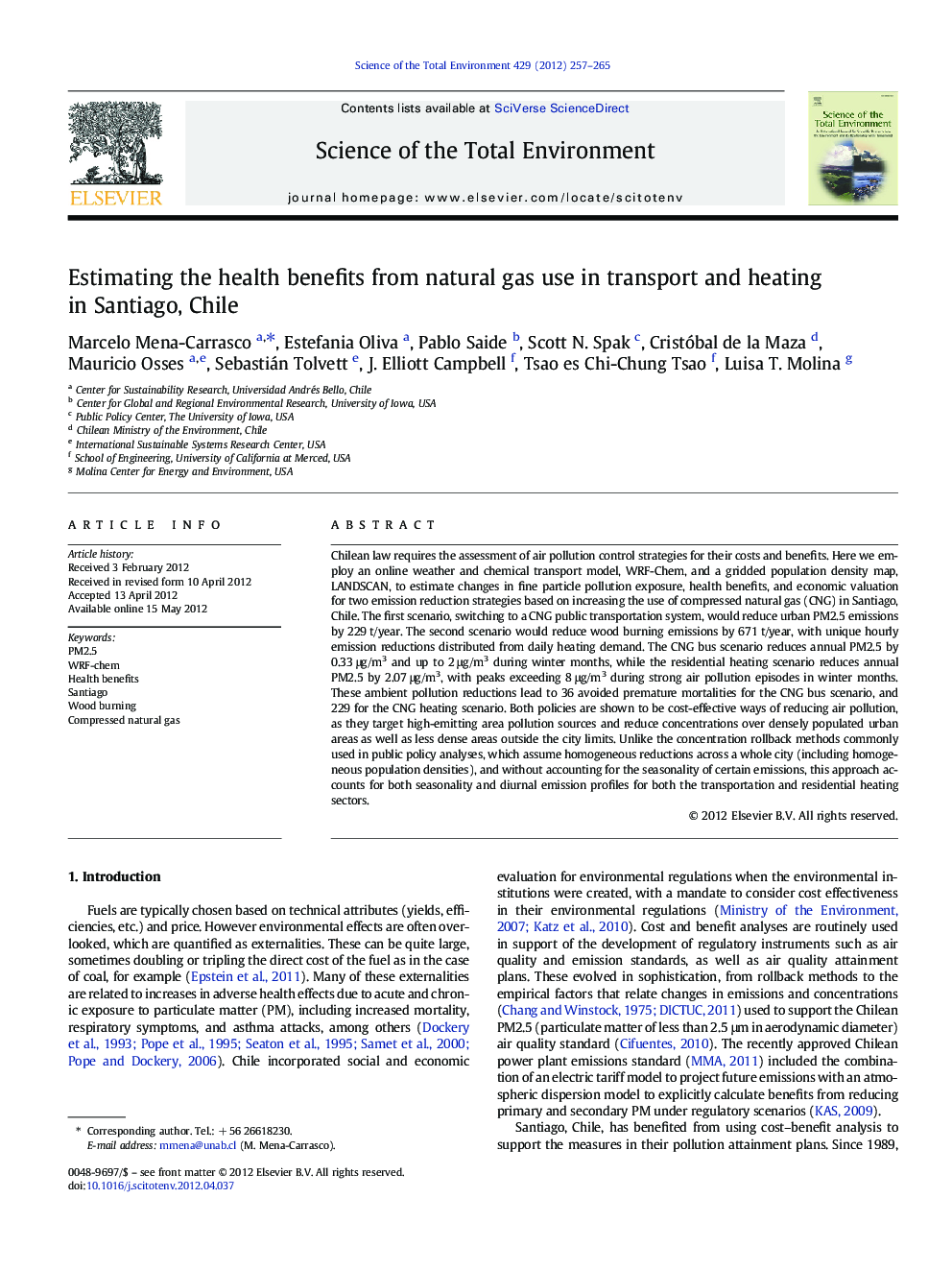| کد مقاله | کد نشریه | سال انتشار | مقاله انگلیسی | نسخه تمام متن |
|---|---|---|---|---|
| 4429388 | 1619823 | 2012 | 9 صفحه PDF | دانلود رایگان |

Chilean law requires the assessment of air pollution control strategies for their costs and benefits. Here we employ an online weather and chemical transport model, WRF-Chem, and a gridded population density map, LANDSCAN, to estimate changes in fine particle pollution exposure, health benefits, and economic valuation for two emission reduction strategies based on increasing the use of compressed natural gas (CNG) in Santiago, Chile. The first scenario, switching to a CNG public transportation system, would reduce urban PM2.5 emissions by 229 t/year. The second scenario would reduce wood burning emissions by 671 t/year, with unique hourly emission reductions distributed from daily heating demand. The CNG bus scenario reduces annual PM2.5 by 0.33 μg/m3 and up to 2 μg/m3 during winter months, while the residential heating scenario reduces annual PM2.5 by 2.07 μg/m3, with peaks exceeding 8 μg/m3 during strong air pollution episodes in winter months. These ambient pollution reductions lead to 36 avoided premature mortalities for the CNG bus scenario, and 229 for the CNG heating scenario. Both policies are shown to be cost-effective ways of reducing air pollution, as they target high-emitting area pollution sources and reduce concentrations over densely populated urban areas as well as less dense areas outside the city limits. Unlike the concentration rollback methods commonly used in public policy analyses, which assume homogeneous reductions across a whole city (including homogeneous population densities), and without accounting for the seasonality of certain emissions, this approach accounts for both seasonality and diurnal emission profiles for both the transportation and residential heating sectors.
► Recent trends in air quality and emissions in Santiago, Chile are described.
► Health benefits of reducing wood burning and public transportation emissions are estimated.
► WRF-Chem and LANDSCAN are used to estimate changes in exposure to PM2.5.
► Heating degree days are used as a proxy to heating demand to estimate seasonality of emissions.
Journal: Science of The Total Environment - Volume 429, 1 July 2012, Pages 257–265